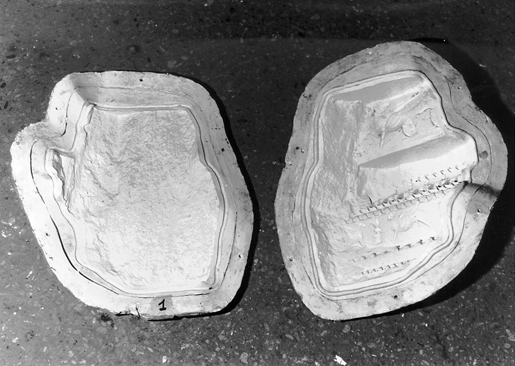

Techniques of Replication and the Conservation of Ancient Artifacts
Professional conservators and restorers with expertise in the treatment of marble executed the casts of the Hartwig-Kelsey fragments. A protocol of scientific controls monitored each step in the replication process.
The Hartwig-Kelsey fragments are in an excellent state of preservation. After conservation and before the start of the mold-making operation, the marble surfaces of the fragments received a protective coating and a barrier film to prevent the migration of silicon oils. Colorimetric measurements taken before and after this treatment confirmed that no contamination occurred.

The process used to make casts of the Hartwig-Kelsey fragments
The goal of this project was to enhance the understanding and aesthetic appreciation of the fragments in a way that would compensate for their division between two museums.
Because the casts were intended for display alongside the marble sculptures, a high level of mimetic fidelity and extreme accuracy in the definition of form were required. The material selected for the Hartwig-Kelsey casts was epoxy resin mixed with marble dust. When the casts were painted to reproduce the patina of the marble surfaces, the desired effect was achieved.

The mold used to produce casts of KM 2424
In this exhibition the casts fulfill an additional function: they stand in for the Roman fragments in the hypothetical reconstructions of the Templum Gentis Flaviae.
There are sound museological reasons for this substitution. Hypothetical reconstructions and restorations of ancient fragments inevitably risk compromising, depreciating, or even detracting from the original works of art. It is, therefore, prudent and responsible not to commit ancient artifacts to a hypothetical reconstruction, no matter how accurate.
Copyright ©1997, 2002 Ministero per i Beni Culturali e Ambientali, Soprintendenza Archeologica di Roma and the Kelsey Museum of Archaeology, University of Michigan. All rights reserved.
 |
 |
 |
 |
 |
 |
 |
 |
 |
 |
 |
 |